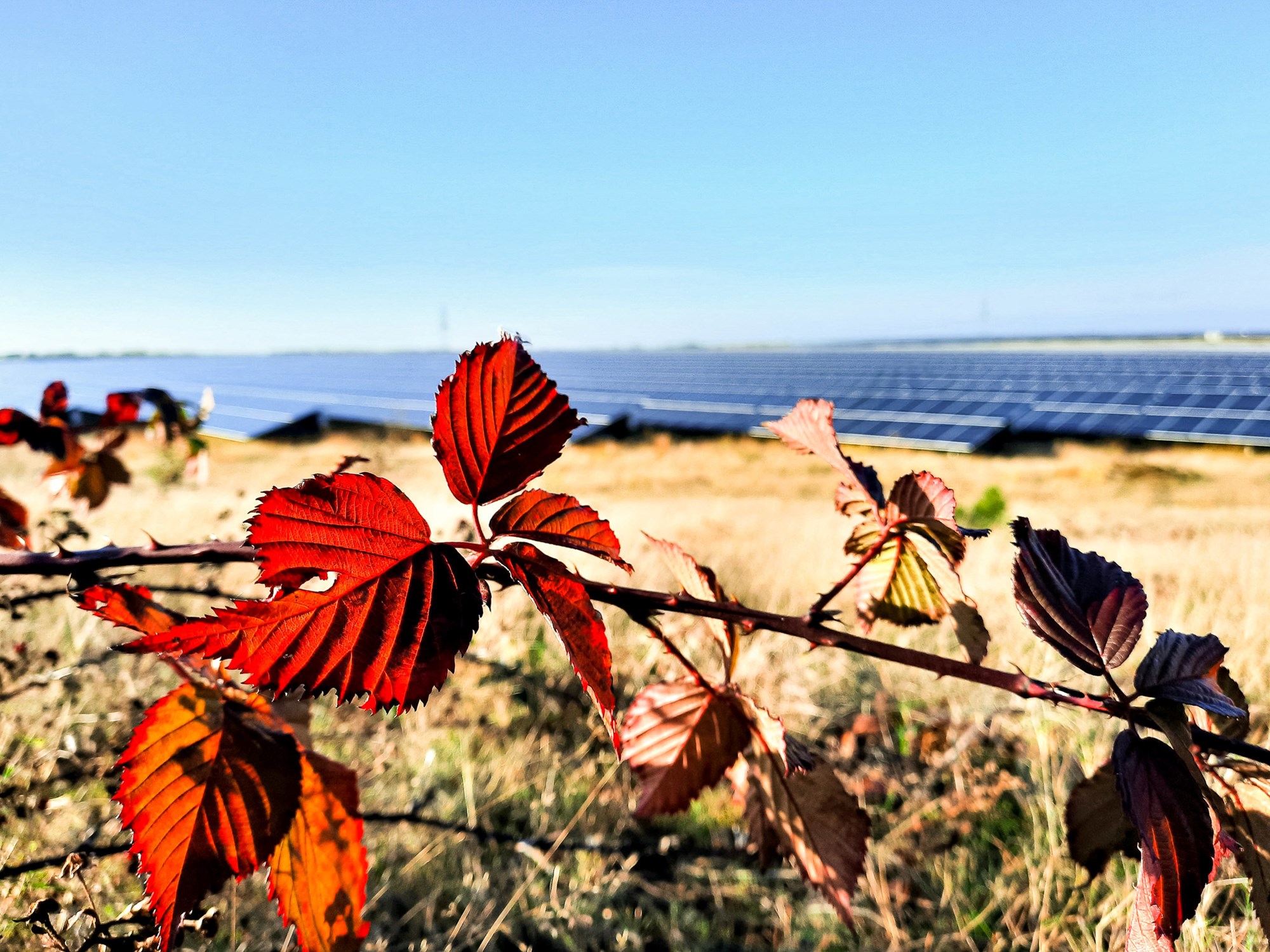
Ground-mount solar usually disturbs no more than 2% of the total site area. Image: Statkraft.
The ongoing energy crisis, fuelled by the war in Ukraine, has thrown into sharp focus the need for the UK to increase its home-grown energy production as quickly as possible, to improve energy security and help mitigate the spiralling costs of consumers’ electricity bills. It has been predicted for years that solar power will be the front-runner of the renewable family, a prediction that appears to be going strong based on the innovation and passion from the industry we witnessed at the UK Solar Summit earlier this month.
Solar is quick and cheap to develop and enjoys consistent public support.
But in recent months, there’s been a debate in a very narrow but high-profile political sphere about whether we should be placing solar panels in fields at all. Solar developments have been described as a “blight on the landscape” with concerns raised that they are taking up valuable agricultural land, which would be better utilised for food production.
I cannot agree with this. Firstly, because solar uses such a tiny amount of land in the UK – just 0.08%. Secondly, because the Government’s planning guidance is that solar farms should be built on ‘moderate quality’ land. Thirdly, solar farms are completely reversable; they can be easily removed at the end of their lifetime and returned to dedicated food production. So the impact of solar on food production is minimal, instead developers like Statkraft are presented with a real opportunity to help improve land quality for agriculture and wildlife.
Responsible solar developers should plan projects that bring added value, beyond the land’s original use. Under the Environment Act 2021, all new developments in England which require planning permission must demonstrate a net biodiversity gain of at least 10%. That means developers like us are legally obliged to leave the land in a better state than it was before we arrived. But at Statkraft, we’re determined to go much further.
“Solar uses such a tiny amount of land in the UK – just 0.08%.
At Stargoose Solar Energy Farm, a project I’ve been developing in Cambridgeshire, we’re proposing measures that will enhance biodiversity at the site by 141%. We’ve seen in our research that a small number of people are concerned that more renewable projects pose a threat to wildlife, but that is a misconception. Solar projects offer a variety of dry and wet and sunny and shaded areas that can, when properly planted and managed, support a variety of wildlife.
When it is built in the next few years, Stargoose will include almost 50 bird boxes, new hedgehog homes and offsite skylark plots. We’re taking steps to enhance local plant, animal, and insect populations, including planting 10 hectares of new meadow grassland, and over 3.5 hectares of woodland and new or restored hedgerow. This isn’t a one off. We’re bringing the same mindset to all our projects.
Despite what some people may think, ground-mounted solar projects are not invasive, because panels are set on posts, meaning there is minimal disturbance to the ground, usually no more than 2% of the total site area. This allows room for larger animals too, with sheep grazing particularly suited to solar farms, something we’re hoping to see more of in other projects I’m developing.
In the last 100 years, bumblebee populations have declined, with two species becoming extinct in the UK. The land selected for solar projects has typically been dominated by intensive agriculture, stripping the soils of nutrients and the environment of wildlife diversity, yet they have the potential to provide an ideal environment for bees because they can support a range of attractive microhabitats.
That’s why Statkraft is working closely with the experts at the Bumblebee Conservation Trust to develop management practices at solar farms like Stargoose, which enhance, create and restore bumblebee habitats. The Bumblebee Conservation Trust provides feedback on habitats, plant species and ground preparation techniques which enable bumblebees to thrive.
Solar can be part of the solution, meeting concerns about food and environmental security while enhancing energy security. I’m acutely aware that new developments of any kind may often be met with concern. But developers and those with solar projects proposed in their neighbourhoods can be confident that they have public support, that solar farms have the potential to bring a multitude of benefits to local people and wildlife, and that their presence is improving UK energy security and helping to safeguard our planet for future generations.
